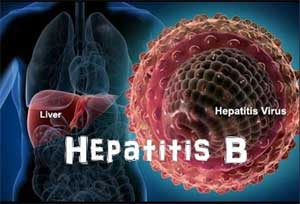- Home
- Editorial
- News
- Practice Guidelines
- Anesthesiology Guidelines
- Cancer Guidelines
- Cardiac Sciences Guidelines
- Critical Care Guidelines
- Dentistry Guidelines
- Dermatology Guidelines
- Diabetes and Endo Guidelines
- Diagnostics Guidelines
- ENT Guidelines
- Featured Practice Guidelines
- Gastroenterology Guidelines
- Geriatrics Guidelines
- Medicine Guidelines
- Nephrology Guidelines
- Neurosciences Guidelines
- Obs and Gynae Guidelines
- Ophthalmology Guidelines
- Orthopaedics Guidelines
- Paediatrics Guidelines
- Psychiatry Guidelines
- Pulmonology Guidelines
- Radiology Guidelines
- Surgery Guidelines
- Urology Guidelines
90% of hepatitis B patients unaware of their disease : Lancet

The 69th World Health Assembly approved the Global Health Sector Strategy to eliminate viral hepatitis by 2030. Despite the fact that no virological cure exists for hepatitis B virus (HBV) infection, existing therapies to control viral replication and prophylaxis to minimize mother-to-child transmission make elimination of HBV feasible. According to an estimate, about 300 million people worldwide are infected with hepatitis B but the majority of cases remain undiagnosed or untreated.A new study has been found that roughly 90% of people infected with the Hepatitis B virus are unaware that they have it. The study has been published in the Lancet Gastroenterology & Hepatology journal.
Discovery of HBsAg in 1965 led to the development of an effective vaccine against hepatitis B virus (HBV), which became available in 1981 and, given that untreated HBV can lead to fibrosis, cirrhosis, and hepatocellular carcinoma, represented the world's first anti-cancer vaccine.The cause of upsurge of infection is that only half of all babies globally receive the vaccine which gives lifelong protection. World Health Organization (WHO) recommends that all newborns receive their first dose of a highly effective vaccine, which has been available since 1981, within 24 hours of birth.In addition to this, less than 1% of all hepatitis B-infected mothers are receiving appropriate treatment.
The study’s authors aimed to estimate the national, regional, and global prevalence of HBsAg in the general population and in the population aged 5 years in 2016, as well as coverage of prophylaxis, diagnosis, and treatment.They identified 42 691 studies in the literature review, of which 435 were used in this analysis. They used a Delphi process that included a literature review in PubMed and Embase, followed by interviews with experts, to quantify the historical epidemiology of HBV infection. They then developed models for 120 countries, 78 of which were populated with data approved by experts. In the study it was estimated that 87% of infants had received the three-dose HBV vaccination in the first year of life, 46% had received timely birth-dose vaccination, and 13% had received hepatitis B immunoglobulin along with the full vaccination regimen. Less than 1% of mothers with a high viral load had received antiviral therapy to reduce mother-to-child transmission.
The highly contagious virus is most prevalent in East Asia and sub-Saharan Africa, according to the report. China, India, Indonesia, Nigeria and the Philippines account for more than 57% of all infections. In the Central African Republic, 12.1% of the population is estimated to be living with the virus, while in Taiwan the figure is 9.4%. The UK, in comparison, accounts for just 0.7% of infections.Although all of the tools necessary to eliminate hepatitis B in children are available yet 1·8 million children aged 5 years were infected with HBV in 2016, with a similar number of new infections occurring annually. This analysis provides a marker on the road to elimination by quantifying the use of prophylaxis and treatment at the national, regional, and global levels. This work can support national strategies to eliminate HBV and decrease the number of new infections by 90% by 2030. We have provided a situational analysis that shows how countries with a high HBV prevalence, such as China, can reduce the number of new infections through proactive national programmes.
For further reference log on to : DOI: https://doi.org/10.1016/S2468-1253(18)30056-6

Disclaimer: This site is primarily intended for healthcare professionals. Any content/information on this website does not replace the advice of medical and/or health professionals and should not be construed as medical/diagnostic advice/endorsement or prescription. Use of this site is subject to our terms of use, privacy policy, advertisement policy. © 2020 Minerva Medical Treatment Pvt Ltd